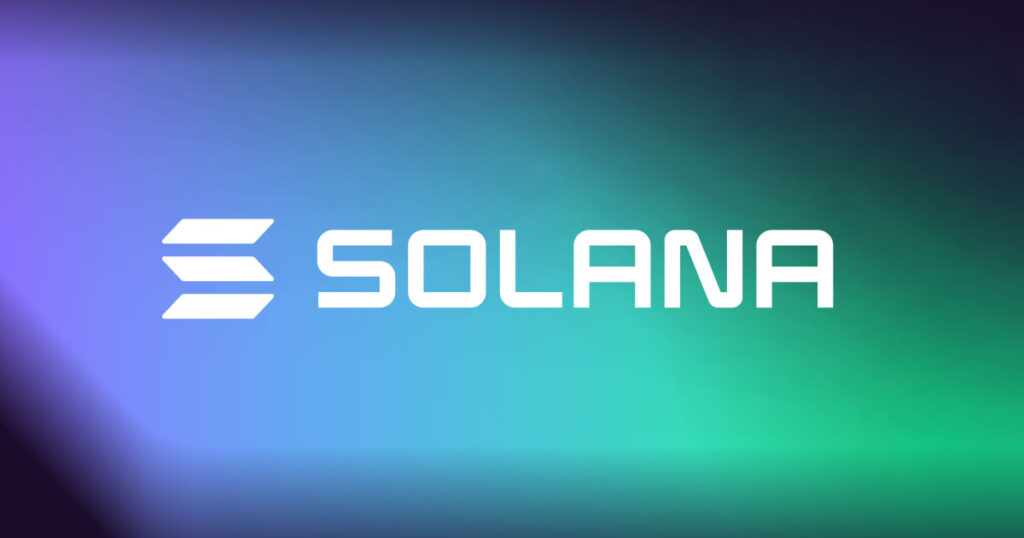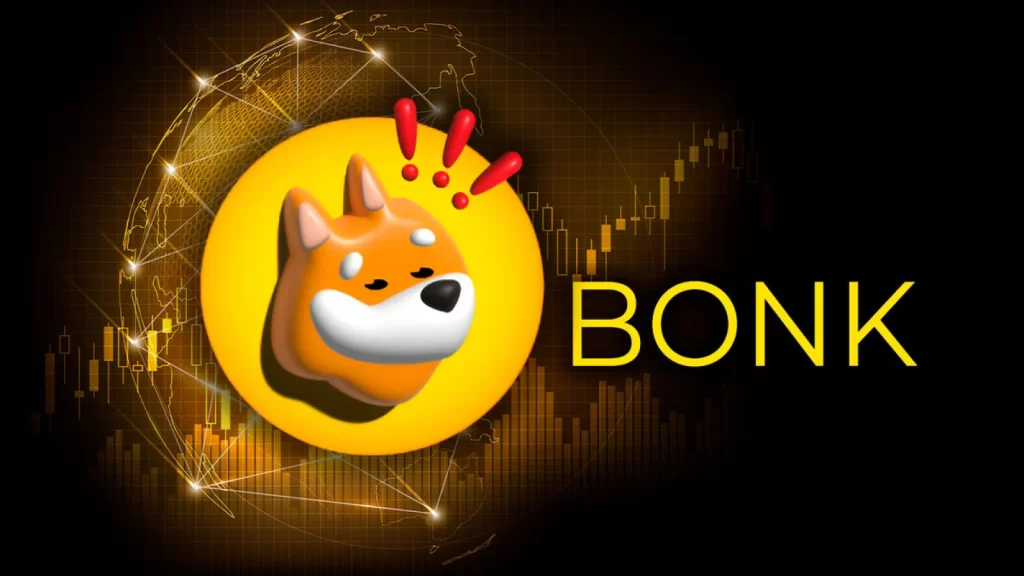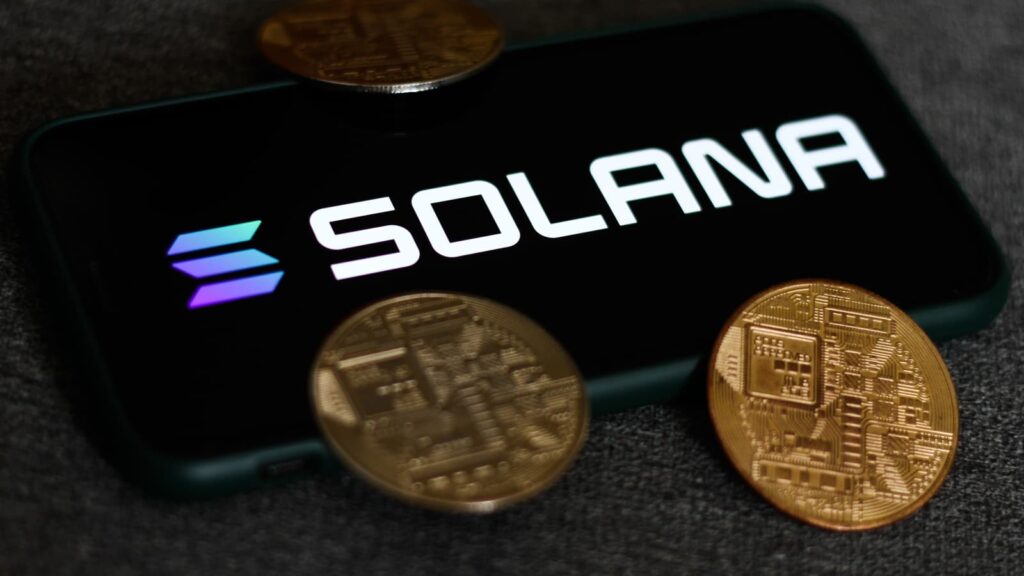The National Anti-Corruption Commission (NACC) of Australia has alleged that a federal police officer erased a Trezor hardware wallet containing 81.62 Bitcoin at a crime scene.
The authorities utilised crypto tracing software to claim that he transferred the Bitcoin into his own possession.
As per a recent report, the Australian police discovered the hardware wallet during a drug raid at a residence but waited approximately three weeks to obtain court permission to access it.
However, upon accessing the wallet, there was no Bitcoin at all, as federal agent William Wheatley allegedly transferred it out shortly after the raid.
The hardware wallet purportedly held 81.62 Bitcoin, valued at $309,000 at the time of the raid in 2019. However, it is currently worth approximately $4.2 million.
Detective Sergeant Deon Achtypis of the cybercrime squad indicated that authorities initially suspected an associate of a crime syndicate for the Bitcoin theft.
“The suspicion arose as the police force also discovered a device containing the seed phrase to the hardware wallet, which is a sequence of 12 to 24 random words that can be used as a recovery method in case the wallet is stolen or lost.”
However, after an extensive investigation into IP addresses used to access the stolen Bitcoin using crypto tracing software, Achtypis allegedly found a link to Wheatley.
“I formed the opinion that a police member may have been involved in the movement of the cryptocurrency.”
Enforcement authorities around the world are adopting crypto-tracing software to tackle illicit activity with digital assets.
In August 2023, Canadian law enforcement announced it had started using Chainalysis Reactor software to help trace illicit crypto transactions.
READ MORE: Coin Metrics Research: Nation-States Unable to Destroy Bitcoin and Ethereum Networks
Moreover, advancements in crypto detective software technology are leading to a higher rate of recovered stolen crypto.
On Jan. 29, Cointelegraph reported that over $674 million was recovered from more than 600 large-scale crypto hacks in 2023.
Meanwhile, Wheatley is pleading innocent against accusations of exploiting his position as a public officer for personal gain, theft, and involvement with proceeds of crime.
He is reportedly prepared to contest the charges regarding the stolen Bitcoin from the Trezor wallet.
This comes amid Trezor’s acknowledgment of a security breach affecting nearly 66,000 users.
On Jan. 20, Cointelegraph reported that Trezor disclosed unauthorised entry into a third-party support portal on Jan. 17.
The company warned that individuals who had engaged with Trezor’s support team since December 2021 might have had their data compromised in the incident.
Cryptocurrency exchange Coinbase has bestowed a generous sum of £3.6 million upon Brink, a non-profit organisation that extends support to developers contributing to the Bitcoin blockchain.
In a post dated February 16th on X, Brink acknowledged Coinbase CEO Brian Armstrong and the exchange’s team for their contribution towards “Bitcoin developing funding efforts.”
The platform emphasised that the donation came with “no strings attached” and would bolster the endeavours of engineers involved in open-source development for the BTC blockchain.
Coinbase’s GiveCrypto initiative, spearheaded by Armstrong in 2018, facilitated the donation to Brink.
However, the exchange disclosed in December 2023 its intention to phase out the platform due to its inability to effect enduring change solely through unconditional cash transfers.
Established in 2020, Brink offers fellowship and grant programmes aimed at bolstering Bitcoin developers and engineers.
READ MORE: Uniswap Foundation Announces Launch Date for Protocol’s v4 Following Ethereum’s Dencun Upgrade
Noteworthy backers of the platform include Block CEO Jack Dorsey, who pledged £5 million in July 2023.
Prior to the approval of its spot BTC exchange-traded product by the United States Securities and Exchange Commission on January 10th, VanEck announced its commitment to allocate 5% of profits from the investment vehicle to Bitcoin core developers.
This asset management firm made a comparable pledge to Ethereum core developers in September 2023.
Coinbase disclosed a net revenue of £905 million in the fourth quarter of 2023, marking a 45% increase over Q3.
On February 15th, JPMorgan analysts revised their rating of the crypto exchange’s stock from underweight to neutral, having initially downgraded the shares in January.
Bitcoin mining difficulty, which gauges the level of complexity in solving the intricate cryptographic puzzles integral to the mining process, surpassed 80 trillion on Friday, February 16th.
As per BTC.com, the network’s hash rate, indicating the cumulative computational power utilised by miners, achieved 562.81 exahashes per second (EH/s), with the mining difficulty reaching a peak of 81.73 trillion.
The escalation in Bitcoin (BTC) mining difficulty has been consistent since January 2023, with forecasts anticipating a climb to 100 trillion in the imminent months.
In Bitcoin’s proof-of-work consensus mechanism, heightened difficulty necessitates miners to employ greater computational power and energy to uncover the correct hash.
Over the past year, Bitcoin’s difficulty level has more than doubled.
During its automatic readjustment on February 15th, Bitcoin mining difficulty was slated to surge by an estimated 6%.
If this transpires, data from monitoring resource BTC.com suggests it will propel the difficulty to unprecedented heights above 80 trillion for the first time.
On February 16th, Bitcoin maintained a value of $52,000 at the commencement of Wall Street trading, buoyed by the revelation of surpassing expectations in the latest United States macro data.
READ MORE: Bakkt Secures Regulatory Approval to Raise $150 Million Amid Financial Concerns
Figures from Cointelegraph Markets Pro and TradingView depicted a stagnant BTC price performance as the week’s final TradFi trading session unfolded.
In April, Bitcoin’s mining rewards are set to halve in what is termed the Bitcoin Halving.
As a hedge against inflation, Bitcoin’s developers integrated this reduction into the token’s structure approximately every four years, with the previous halving transpiring in May 2020.
The forthcoming halving will diminish Bitcoin’s rewards from 6.25 BTC to 3.125 BTC.
This adjustment may lead to a reduced hash rate, with less efficient miners grappling to cover expenses and potentially shutting down their mining rigs.
Consequently, a diminished hash rate is likely to precipitate a decline in Bitcoin mining difficulty as the network endeavours to sustain a consistent block production rate every 10 minutes.
Analysts from Galaxy Digital speculate that as much as 20% of Bitcoin’s existing hash rate could deactivate post the Bitcoin halving, leaving only the most efficient mining rigs operational.
The Backpack cryptocurrency exchange, built on Solana, swiftly attained the £300 million milestone within a mere 24 hours of commencing its pre-season beta launch, as stated in a Feb. 15 post by Backpack.
The exchange was initiated by the minds behind Solana’s Mad Lads executable nonfungible token (NFT) collection.
The exchange’s surge in popularity is attributed in part to the outstanding success of the Mad Lads xNFT collection within the Backpack ecosystem and the promising potential of the underlying Solana blockchain, as highlighted by Anndy Lian, an intergovernmental blockchain expert and the author of the book NFT: From Zero to Hero. Lian conveyed to Cointelegraph:
“Backpack Exchange leverages the Solana blockchain, one of the fastest and most scalable platforms for decentralized applications […] Solana is also seen as a potential contender for the future of decentralized finance, or DeFi, which is a fast-growing sector of the crypto industry.”
Within 24 hours of its pre-season launch, Backpack recorded 6,000 unique deposit transactions, as per a Feb. 13 post by Armani Ferrante, the founder and CEO of Backpack.
The recently unveiled exchange showcases impressive trading statistics, including one-millisecond order placement and sub-one millisecond order cancellation, as confirmed by Ferrante.
READ MORE: BONK Memecoin Surges 7% Amidst Revolut Partnership Rumors
Backpack’s SOL/USDC spot trading pair amassed over £643 million in 24-hour trading volume, surpassing the trading pair of the world’s largest exchange, Binance, which accrued £2.4 million in 24-hour trading volume.
In October 2023, Backpack Exchange acquired a virtual asset service provider (VASP) license from the Dubai Virtual Assets Regulatory Authority (VARA).
Moreover, the exchange secured various other operational licenses across numerous jurisdictions worldwide in the latter half of 2023.
Following Backpack’s triumph, the 24-hour trading volume of Mad Lads NFTs escalated by 77.93% to surpass £1 million, positioning it as the third-largest collection by daily trading volume across all blockchain networks.
Solana witnessed a 20.19% surge in sales volume to £7.35 million, ranking as the second-largest blockchain by daily NFT sales volume after Ethereum, which amassed £18.28 million in 24-hour NFT sales volume, according to NFT data aggregator CryptoSlam.
Cash-strapped crypto firm Bakkt has announced it has received regulatory approval to raise up to $150 million through the sale of its securities, just a week after expressing concerns about its financial position.
On 14th February, the company stated it had obtained approval for a “shelf registration,” also referred to as a shelf offering – a procedure where a company registers a new issuance of securities with the United States Securities and Exchange Commission (SEC) that can be gradually sold over a period without requiring separate approval each time.
Bakkt stated that this approval would enable it to raise an aggregate of $150 million in capital through one or more offerings over a span of three years.
“Bakkt believes the flexibility of a shelf registration on Form S-3 will provide the Company with significant benefits when raising capital in the future,” the company said.
Bakkt, previously hailed as Bitcoin’s “saviour” during the 2018 bear market, disclosed on 7th February that it was facing a cash shortage and thus “might not be able to continue.”
At that time, Bakkt mentioned its intention to potentially raise additional capital by issuing its registered securities in the public markets to “fund our long-term vision.”
READ MORE: Bitcoin Dips as US Inflation Data Rattles Markets
Since being publicly listed in October 2021, the firm has reported eight consecutive quarters of net losses.
According to company financials, despite the crypto market’s recovery from a challenging 2022, the firm incurred losses of $44.9 million, $50.5 million, and $51.7 million in the first three quarters of 2023.
Net losses decreased in 2023 after the firm reported significant losses of $1.59 billion and $323.9 million in the third and fourth quarters of 2022, respectively.
The firm has recorded a total of $2.26 billion in net losses since the fourth quarter of 2021.
Bakkt operates a digital asset trading platform for institutions and has established strategic partnerships with companies such as Starbucks and Amazon Web Services to facilitate digital asset transactions and services.
Founded in 2018 by Intercontinental Exchange, the U.S.-based firm that owns the New York Stock Exchange, Bakkt saw its share price rise by 7.8% to $1.03 before the news.
However, it remains more than 51% down in 2024.
Although its share price reached over $42 on 29th October 2021, it sharply declined to $3.61 the following January and has since been steadily declining.
Solana-based meme token Bonk’s (BONK) experienced a 7% surge shortly after reports emerged suggesting the potential listing of the Solana-based meme token on Revolut’s trading platform.
According to a note from BonkDAO, the decentralized autonomous organization behind Bonk, a proposed collaboration aims to initiate a Bonk “Learn and Earn Campaign” to bolster the meme token’s user base by 500,000.
Revolut presently boasts 38 million users and holds a banking license across over 50 countries, as noted by BonkDAO.
This indicates that merely 1.3% of Revolut users need to be engaged to meet the set target.
Reportedly, Revolut users will be motivated to partake in the Learn and Earn campaign, with rewards totalling $1.2 million on offer.
Following this development, BONK’s price stands at $0.000025, marking a 7.2% increase within the past five hours and a 13.1% surge over a 24-hour period, as per CoinGecko.
BONK gained substantial attention in late 2023, witnessing a staggering 14,000% surge to $0.000025.
Despite a subsequent 60% decline from its peak, it remains one of the most traded meme tokens by volume.
READ MORE: Ledger and Coinbase Join Forces to Simplify Crypto Transactions and Enhance Self-Custody Options
However, the campaign is pending official endorsement from BonkDAO. Presently, seven out of 12 Bonk voting members have voted in favour of the campaign, with one more vote required to achieve approval quorum.
No dissenting votes have been recorded yet, with the remaining five voters having four days to cast their vote.
If sanctioned, the Learn and Earn campaign will be executed in two phases.
The first phase will mark BONK’s debut on Revolut, focusing on fostering “organic growth” for the initial one to two months, followed by the launch of the Learn and Earn campaign.
Cointelegraph attempted to reach out to Bonk community members for their input but received no immediate response.
Meanwhile, speculations are rife regarding BONK’s potential listing on Robinhood, although no official confirmation has been made by either party.
Cointelegraph has reached out to Robinhood for comment.
Solana’s SOL token has overtaken Binance’s BNB token to secure the position of the fourth-largest cryptocurrency by market capitalisation.
Over the span of 24 hours leading up to 1:50 pm UTC, SOL experienced a notable surge of 7.56%, reaching a trading value of $112.52, surpassing BNB.
According to CoinMarketCap data, SOL now boasts a market capitalisation of $49.36 billion, which is 1.74% greater than BNB’s $48.5 billion.
This rise in SOL’s price coincided with the Crypto Fear and Greed Index reaching its highest level since November 2021, when Bitcoin soared to $69,000.
Notably, this index surged a day after Bitcoin exceeded $50,000 for the first time since December 2021.
Despite encountering a network outage on February 6, SOL managed to outpace BNB.
The approval of the Pyth DAO Constitution on-chain likely served as a catalyst for this rally.
The proposal aimed to establish the Pyth DAO Constitution as the governing framework for the Pyth DAO, an autonomous organisation overseeing the Pyth Network.
READ MORE: Blockchain Academy Initiative Gains Traction Among Young Entrepreneurs in UAE
Despite the recent setback, SOL has gained 19.99% over the past seven days, albeit remaining 57% lower than its all-time high of $260.06, recorded on November 6, 2021.
Solana Mobile’s Chapter 2 smartphone garnered 100,000 pre-orders by February 12, within a span of less than 30 days.
In contrast, it took Solana nearly a year to sell 20,000 units of its inaugural Solana Saga smartphones.
Following this achievement, the pre-order window for purchasing the new Solana phone for $450 is set to close on February 14, as announced by Solana Mobile.
Shipments of the smartphones are expected to commence in early 2025.
Meanwhile, BNB has been grappling with challenges amid Binance’s regulatory issues.
On February 12, the sentencing date for Binance founder Changpeng Zhao was postponed from February 23 to April 30. Zhao, currently on a $175 million bond, is residing in the United States.
Investors of the Hector decentralised autonomous organisation, HectorDAO, on the Fantom network are demanding control of the protocol’s remaining funds after the team allegedly halted all communications following a Jan. 16 hack that led to $2.7 million in losses.
In a conversation with Cointelegraph, a HectorDAO investor who wishes to remain anonymous stated that the HectorDAO team stopped communicating with its community on Jan. 19.
According to the source, all project social channels were muted in September 2023.
At that time, the HectorDAO team still allowed contact through a Google Group email address. However, the DAO allegedly deleted this group sometime before Jan. 19.
To make matters worse, the hack occurred just as the protocol planned to dissolve itself and return assets to investors. Prior security warnings were allegedly ignored.
According to blockchain security firm CertiK, its researchers informed the HectorDAO team of the “centralisation” risk posed by the “addEligibleWallet” function, the root cause of the exploit, and recommended steps to mitigate this risk.
The HectorDAO team allegedly chose not to implement the recommended changes for unknown reasons CertiK referred Cointelegraph to its official audit report, which stated that the function could be called by any account with moderator privileges.
HectorDAO tells a different version of the story, claiming that the protocol engaged with CertiK to conduct a thorough smart contract security analysis and that, contrary to CertiK’s statement, “all assets were secured in a Redemption Vault prior to the launch of the production claim process.”
Blockchain analysis has since shown that the attacker allegedly had access to the team’s deployer account, implying that the exploit was either an inside job or the result of a private key compromise.
The development team’s last known communication to investors was on Jan. 18, before going quiet.
The story of HectorDAO begins in 2021, when its early investors were allowed to buy the DAO’s token, HEC, at a discount through DAO bonds.
The funds raised through this process went into the DAO’s treasury, where, theoretically, each HEC token represented ownership of a portion of the treasury, which could be reinvested to produce yield for tokenholders.
At its height, the HectorDAO treasury held over $100 million in digital assets.
But troubles began with the onset of the crypto winter.
By 1st May 2023, HEC’s price had collapsed by nearly 99%, according to data from CoinMarketCap. At the same time, the HectorDAO treasury also declined in value.
These difficulties accelerated when the $1.5 billion Multichain bridge hack on 6th July 2023 caused contagion in the Fantom ecosystem.
This led to another $8 million in losses for HectorDAO, as some of its treasury assets depegged from their Ethereum collateral.
After this incident, HectorDAO investors decided to call it quits, voting in July 2023 to liquidate the DAO and return its funds to users.
Despite the vote, however, most of the $16 million held by the treasury at the time of the vote had yet to be distributed to investors by 15th Jan 2024, on the eve of the HectorDAO hack.
On 15th Jan, the HectorDAO team attempted to finally distribute treasury funds by moving them into a new contract from which they could be redeemed.
However, a malicious account immediately transferred $2.7 million worth of assets to itself after depositing only 0.0001 HEC.
READ MORE: Crypto.com Defends Major Sponsorship Deals with F1 and UFC
Shortly afterward, the team shut down the redemption platform, and all remaining assets were moved back to the treasury contract. The redemptions have not been reopened since.
On 18th Jan, the HectorDAO team announced that the redemption platform had been hacked.
“Hector Network regrets to inform you that there has been a security breach when the protocol was redeeming token holders as part of liquidation, and approximately USDC 2.7 million have been stolen on 15 January 2024,” it stated.
The team claimed it was “actively investigating” the breach and would provide updates in the future. In the meantime, it stated, “the redemption process is postponed for now.”
In the wake of the hack announcement, some tokenholders squarely blamed the development team, claiming that the hack was either the work of a rogue developer or a compromised private key.
They argued that the team could no longer be trusted to secure the DAO’s funds.
On 19th Jan, blockchain analyst Lilbagscientist released a detailed post-mortem report on the attack, citing data from Etherscan.
According to them, preparations for the attack began on 16th Dec 2023, when the HectorDAO deployer account sent 0.0001 HEC to the attacker. This 0.0001 HEC sat in the account until 15th Jan.
From 12:32 am UTC through 12:43 am on 15th Jan, a series of 14 transactions were submitted to Ethereum by the HectorDAO team’s Treasury Multisig Wallet.
When confirmed, these transactions resulted in some of the treasury funds being moved to the HectorDAO Temporary Treasury Multisig, while others were sent to the Hector Liquidation Manager.
The Hector Liquidation Manager then swapped some of the tokens for others on a decentralised exchange before sending them to the Temporary Treasury Multisig.
At the end of this process, the entirety of the HectorDAO treasury had been sent to the Temporary Treasury Multisig.
Between 3:14 am and 4:19 am on 15th Jan, an additional 16 transactions were performed by the Temporary Treasury Multisig, moving the funds to the Hector Redemption Treasury contract.
At 5:12 am, the attacker made a token approval, allowing up to 1 HEC to be spent by the Hector Redemption Contract. Immediately afterward, they deposited 0.0001 HEC into the contract.
One minute later, the team’s deployer account whitelisted the attacker’s wallet by calling the addEligibleWallet function on the platform’s Token Vault contract.
This transaction also set the rate of redemption at $2.7 million worth of USD Coin.
At 5:59 am, the attacker called mintWithdraw on the Token Vault contract.
This caused the Hector Redemption Contract to send $2.7 million in USDC to the attacker and burn the 0.0001 HEC that had been deposited. This transaction completed the attack.
The HectorDAO website’s most recent update was posted on 18th Jan. The last paragraph states that the redemption process is “postponed for now.”
“Hector Network is working tirelessly to address this, is committed to maintaining transparency throughout this process and will keep you updated on any developments,” the team wrote.
Meanwhile, HectorDAO investors say that they are considering legal action amid repeated failed efforts to contact the protocol’s developers.
Originally, payments were scheduled for March to compensate investors as the DAO liquidates. An investigation into the hack continues.
Cointelegraph attempted to contact the HectorDAO team for comment but did not receive a response by the time of publication.
Bitcoin (BTC) suffered sudden losses ahead of the Feb. 13 opening on Wall Street, as United States inflation data delivered a blow to risky assets.
Data from Cointelegraph Markets Pro and TradingView tracked a 3.8% decline in BTC price for the day, reaching a low of $48,435 on Bitstamp.
Bitcoin reacted negatively to the January Consumer Price Index (CPI) data, which surpassed expectations.
The month-on-month CPI stood at 0.3%, with the year-on-year figure at 3.1% — exceeding predictions by 0.1% and 0.3%, respectively.
“The index for shelter continued to rise in January, increasing 0.6 percent and contributing over two-thirds of the monthly all items increase.
The food index increased 0.4 percent in January, as the food at home index increased 0.4 percent and the food away from home index rose 0.5 percent over the month,” read an official press release from the U.S. Bureau of Labor Statistics.
“In contrast, the energy index fell 0.9 percent over the month due in large part to the decline in the gasoline index.”
Markets promptly began reevaluating the probability of the Federal Reserve reducing interest rates, postponing expectations from March to later in the year.
The latest figures from CME Group’s FedWatch Tool indicated only an 8.5% likelihood of a rate cut in March, compared to 17.5% on Feb. 12.
READ MORE: Crypto.com Defends Major Sponsorship Deals with F1 and UFC
“This inflation reading was much hotter than expected all around the board,” commented trading resource The Kobeissi Letter on X (formerly Twitter).
“Core CPI was expected to fall and it didn’t while CPI inflation came in 20 bps above expectations. A March rate cut is likely gone.”
Kobeissi noted that avoiding a premature rate cut, which would bolster risky assets including crypto, was the Fed’s “top priority.”
The resurgence of inflows into spot Bitcoin exchange-traded funds (ETFs) did little to stabilize Bitcoin’s situation.
$49,000 remained elusive, while outflows from the Grayscale Bitcoin Trust (GBTC) amounted to around 2,400 BTC ($117 million), according to data from crypto intelligence firm Arkham.
Despite this, popular trader Daan Crypto Trades noted positive trends in ETF flows, which were absorbing BTC supply around twelve times faster than new coins entered the market.
GBTC’s net asset value (NAV) flipped positive relative to Bitcoin for the first time in almost three years last week.
Blowfish, a Web3 security firm, has uncovered two fresh Solana drainers capable of executing bit-flip attacks, as disclosed in an analysis shared on the social media platform X on February 9.
The drainers, Aqua and Vanish, were identified altering a condition within on-chain data even after a user’s private key had authenticated a transaction.
Blowfish revealed that these drainers’ scripts are purchasable for a fee within marketplaces that peddle scam-as-a-service tools.
The Blowfish team elucidated the modus operandi employed by the drainers to manipulate data and pilfer funds:
“On Solana, a dApp can be granted authority to submit a transaction.
If the dApp’s on-chain program incorporates a condition permitting it to transfer the user SOL or drain their account, a drainer could manipulate that condition at any given moment,” the analysis expounded.
Initially, users remain oblivious to the presence of these drainers. The victim signs what seems to be a legitimate transaction.
However, subsequent to obtaining the signature, the drainer temporarily retains the transaction.
“Subsequently, via a separate transaction, they alter the dApp’s condition; it transitions from ostensibly sending SOL to seizing it instead.”
READ MORE: European Commission Proposes Mandate for Tech Platforms to Detect AI-Generated Content
A bit-flip attack represents a form of exploitation where the perpetrator alters the value of certain bits within encrypted data to manipulate a system.
This tactic enables the attacker to modify the encrypted message sans knowledge of the encryption key.
By flipping specific bits, an attacker can sometimes alter a message in a foreseeable manner post decryption.
The Solana ecosystem has witnessed an escalating onslaught from crypto drainers.
According to Chainalysis, a leading online community centred around a single Solana wallet drainer kit boasted over 6,000 members as of January.
Brian Carter, senior intelligence analyst at Chainalysis, previously conveyed to Cointelegraph that the most effective draining kits possess the ability to target numerous assets through diverse means.
Allegedly, the Blowfish team has implemented defensive measures to automatically thwart the newly identified drainers and is actively monitoring on-chain activities.











